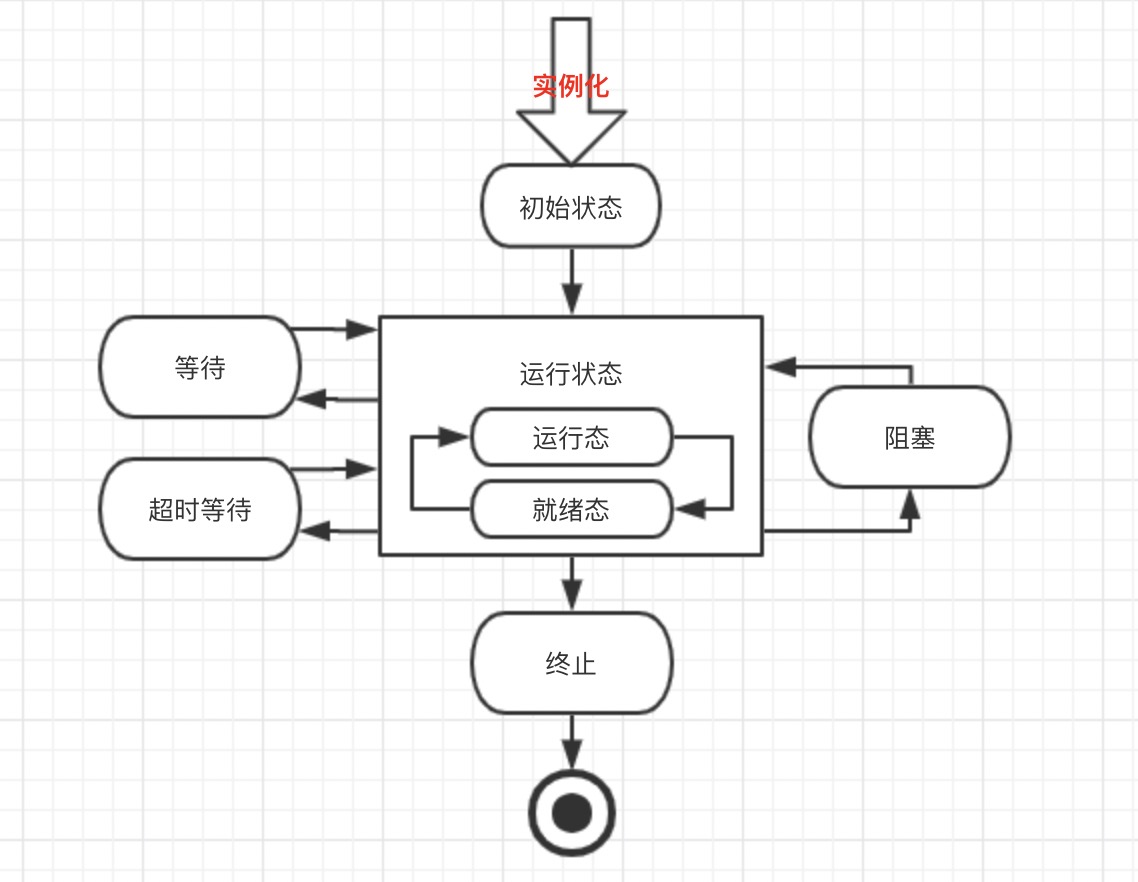Source code: GitHub point here || GitEE point here
1, Introduction to concurrent programming
1. Basic concepts
- program
Computer programs, procedures, rules and possible files, documents and data related to the operation of computer system.
- process
A process is a program in a computer. A running activity on a data set is the basic unit of resource allocation and scheduling of the system and the basis of the operating system structure. In the early process oriented computer structure, the process is the basic execution entity of the program; in the thread oriented computer structure, the process is the container of the thread. A program is a description of instructions, data and their organizational forms. A process is an entity of a program.
- thread
Thread is the smallest unit that the operating system can schedule operations. It is included in the process and the actual operation unit of the process. A thread refers to a single sequential control flow in a process. Multiple threads can be concurrent in a process. Each thread performs different tasks in parallel.
- Sequential programming
All steps in a program can only execute one step at any time. Most of the programming scenarios are based on sequential programming.
- Concurrent programming
Processing multiple tasks on one processor at the same time, which is a complex and time-consuming task in parallel processing program. Concurrency is multiple events on the same entity. Multiple events occur at the same time interval.
2. Entry case
public class HelloThread {
public static void main(String[] args) {
System.out.println("Hello,Thread");
// Current thread name
System.out.println(Thread.currentThread().getName());
// Management interface of thread system
ThreadMXBean threadMXBean = ManagementFactory.getThreadMXBean();
long[] threadIds = threadMXBean.getAllThreadIds() ;
for (long id : threadIds) {
ThreadInfo threadInfo = threadMXBean.getThreadInfo(id) ;
System.out.println(threadInfo.getThreadId()+
":"+threadInfo.getThreadName());
}
}
}Print results:
5:Monitor Ctrl-Break 4:Signal Dispatcher 3:Finalizer 2:Reference Handler 1:main
It can be seen that the above simple Java program is executed by more than one main thread.
2, Thread creation method
1. Inherit Thread class
Infrastructure of Thread class:
class Thread implements Runnable
The Runnable interface has been implemented here.
public class CreateThread01 {
public static void main(String[] args) {
// Calling method
MyThread1 myThread1 = new MyThread1() ;
myThread1.start();
}
}
class MyThread1 extends Thread {
// Set thread name
public MyThread1 (){
super("CicadaThread");
}
@Override
public void run() {
System.out.println(Thread.currentThread().getName());
}
}2. Implement the Runnable interface
If the created Thread class already has a parent class, you can no longer inherit the Thread class. Multiple inheritance is not allowed in Java. Then you can implement the Runnable interface.
public class CreateThread02 {
public static void main(String[] args) {
Thread thread = new Thread(new MyThread2(),"MyThread2") ;
thread.start();
}
}
class MyThread2 implements Runnable {
@Override
public void run() {
System.out.println(Thread.currentThread().getName()+" run ...");
}
}3. Anonymous inner class
Defining a class within a class is called an inner class. Inner class is equivalent to a member of outer class, which can be regarded as a whole.
public class CreateThread03 {
public static void main(String[] args) {
//Mode 1
new Thread("ThreadName1") {
public void run() {
System.out.println("1:"+Thread.currentThread().getName());
};
}.start();
//Mode 2
new Thread(new Runnable() {
public void run() {
System.out.println("2:"+Thread.currentThread().getName());
}
},"ThreadName2"){
// The run method is rewritten here
@Override
public void run() {
System.out.println("3:"+Thread.currentThread().getName());
}
}.start();
}
}4. Return value thread
As the name implies, after asynchronous execution of the thread, the processing result of the thread can be returned.
public class CreateThread04 {
public static void main(String[] args) throws Exception {
MyThread4 myThread4 = new MyThread4();
FutureTask<Integer> task = new FutureTask<>(myThread4);
Thread thread = new Thread(task,"TaskThread");
thread.start();
// Waiting for results
// Integer result = task.get();
// Set the waiting time to get the result, timeout throw: TimeoutException
Integer result = task.get(3, TimeUnit.SECONDS) ;
System.out.println("result="+result);
}
}
class MyThread4 implements Callable<Integer> {
// Encapsulate tasks performed by threads
@Override
public Integer call() throws Exception {
System.out.println(Thread.currentThread().getName());
Thread.sleep(1000);
return 2+3;
}
}5. Scheduled tasks
Timer is a tool class for background threads to execute task scheduling. It can be executed regularly or repeatedly according to rule configuration.
class TimerTask implements Runnable
Task class: the TimerTask structure implements the Runnable interface.
public class CreateThread05 {
public static void main(String[] args) {
Timer timer = new Timer();
timer.schedule(new TimerTask() {
@Override
public void run() {
System.out.println("Delay 1 s,Every 3 s Execute once");
}
}, 1000, 3000);
}
}6. Thread pool management
Thread pool is a form of multithreading, in which tasks are added to the queue during processing, and then these tasks are automatically started after creating threads.
public class CreateThread06 {
public static void main(String[] args) {
Executor threadPool = Executors.newFixedThreadPool(5);
for(int i = 0 ;i < 5 ; i++) {
threadPool.execute(new Runnable() {
@Override
public void run() {
System.out.println(Thread.currentThread().getName());
}
});
}
}
}3, Thread state management
1. Status description
- NEW
Initial state: after the thread instance is built, it is in this state before the start() method is called.
- RUNNABLE
Running state: in the Java thread, the ready and running states are called running states. In the actual execution process, these two states can be switched at any time. When the start() method is called, or after sleep(), the join() ends, etc., it enters the runnable ready state and begins to wait for the CPU time slice; when the thread is selected and allocated with the CPU time slice by the thread scheduling, the thread is in the runnable state, which is running state;
- BLOCKED
Blocking status: usually refers to being blocked by the lock mechanism, indicating that the thread is acquiring resources under lock control.
- WAITING
Waiting state: the thread entering this state, waiting to be notified or interrupted by other threads, also known as explicit wake-up.
- TIMED_WAITING
Timeout WAITING state: this state is different from WAITING state. Threads in this state can wake up automatically after a specified time;
- TERMINATED
Termination status: indicates that the current thread task has completed execution.
2. Case process analysis
public class StateCycle01 {
public static void main(String[] args) throws Exception {
// Enter initial state
StateThread01 stateThread01 = new StateThread01();
FutureTask<String> task = new FutureTask<>(stateThread01);
Thread thread = new Thread(task,"GetValueThread");
// running state
thread.start();
// Timeout waiting for results
String result = task.get(3, TimeUnit.SECONDS) ;
System.out.println("result="+result);
StateThread02 stateThread02 = new StateThread02() ;
Thread thread1 = new Thread(stateThread02,"WaitThread");
thread1.start();
}
}
class StateThread01 implements Callable<String> {
@Override
public String call() throws Exception {
// Timeout wait
Thread.sleep(1000);
return "Hello,Cicada";
}
}
class StateThread02 implements Runnable {
@Override
public void run() {
synchronized (StateCycle01.class) {
System.out.println("Thread entry...");
try {
// Wait state, discard object lock
StateCycle01.class.wait(2000);
} catch (Exception e) {
e.printStackTrace();
}
System.out.println("Thread continues...");
}
}
}The above process describes the switch between different states of threads, and the basic flow chart is as follows.

The state description of a thread is not complicated, but the switch between each state is very complex, which will be explained in modules.
4, Summary of advantages and disadvantages
1. Advantages
The most direct role is to greatly improve the efficiency of program execution; program asynchronous decoupling, in web development, there are often follow-up programs to be executed, which need rapid user interface response; of course, skilled use of concurrent programming is also a necessary skill for an excellent programmer.
2. Defect analysis
The learning curve of concurrent programming is very steep and difficult; it is easy to have problems in competing for resources among multiple threads; it is not that the more threads, the faster the execution speed, the time-consuming before thread switching, and the lock mechanism needs to be reasonably created and used; the communication between thread creation and thread communication needs to be very clear logic; the thread deadlock problem can not be completely avoided; so in one In general, the company's specification for thread usage is very strict.
5, Source code address
GitHub·address https://github.com/cicadasmile/java-base-parent GitEE·address https://gitee.com/cicadasmile/java-base-parent
